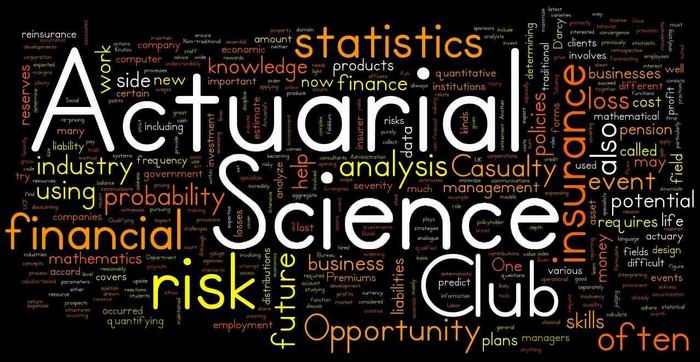Actuarial science is a rapidly growing field that plays an increasingly important role in the public sector. It is a specialized field of mathematics that uses data and statistical analysis to assess risk and inform decisions in areas such as insurance, pensions, investments, and public policy. Actuaries are highly sought after in the public sector due to their ability to provide objective, data-driven insights that can help inform decisions and reduce financial risk. This article will explore the role of actuarial science in the public sector and how it can be used to help make informed decisions.
Examining the Benefits of Actuarial Science in the Public Sector
Actuarial science is a powerful tool for the public sector, offering a wide range of benefits to government organizations and the public at large. By utilizing the principles of actuarial science, public sector organizations can better assess and manage risk, improve financial planning, and maximize resources.
At its core, actuarial science is the application of mathematics and statistics to assess and manage risk. Actuaries use their expertise to calculate the probability of certain events occurring, and the potential financial impact of those events. This allows them to identify and quantify potential risks, and to develop strategies to manage and mitigate those risks.
In the public sector, actuarial science can be used to help organizations better manage their finances. By assessing the potential risks associated with various financial decisions, actuaries can help organizations make informed decisions that maximize their resources and minimize their exposure to risk. This can help organizations better manage their budgets, allocate resources more efficiently, and reduce their overall financial risk.
Actuarial science can also be used to improve the public sector’s ability to provide services. By using actuarial techniques, public sector organizations can better assess the cost and benefits of various programs and services, and make more informed decisions about how to allocate resources. This can help organizations better meet the needs of their constituents, while also ensuring that resources are used in the most efficient and effective manner possible.
Finally, actuarial science can be used to help the public sector better understand and manage the risks associated with certain activities. For example, actuaries can help organizations better understand the potential financial risks associated with natural disasters, and develop strategies to reduce those risks. This can help organizations better prepare for and respond to disasters, and ensure that resources are used in the most effective manner possible.
Overall, actuarial science can be a powerful tool for the public sector, offering a wide range of benefits. By utilizing the principles of actuarial science, public sector organizations can better assess and manage risk, improve financial planning, and maximize resources. This can help organizations better meet the needs of their constituents, while also ensuring that resources are used in the most efficient and effective manner possible.
Exploring the Impact of Actuarial Science on Public Policy
Actuarial science is a highly specialized field of mathematics that is used to assess risk and develop strategies to manage it. It is used in a variety of industries, including insurance, finance, and public policy. As the world becomes increasingly complex, actuarial science is becoming an increasingly important tool for governments and other public policy makers.
Actuarial science is used to analyze data and develop models that can help public policy makers make informed decisions. For example, actuarial science can be used to calculate the potential costs and benefits of a proposed policy, as well as the likelihood of success or failure. This information can then be used to help public policy makers determine whether or not to pursue a particular policy.
Actuarial science can also be used to assess the impact of public policies on various groups. For example, actuarial science can be used to analyze the impact of a proposed tax policy on different income groups. This information can then be used to help public policy makers determine the best way to structure the tax system to benefit the most people.
Actuarial science can also be used to analyze the potential impact of proposed regulations on businesses. For example, actuarial science can be used to analyze the potential costs and benefits of a proposed regulation on a particular industry. This information can then be used to help public policy makers determine the best way to structure the regulation to benefit the most people.
Finally, actuarial science can be used to assess the potential long-term impact of public policies. For example, actuarial science can be used to analyze the potential impact of a proposed environmental policy on future generations. This information can then be used to help public policy makers determine the best way to structure the policy to benefit the most people.
Overall, actuarial science is an invaluable tool for public policy makers. It can be used to assess the potential costs and benefits of proposed policies, as well as the potential long-term impact of those policies. By using actuarial science, public policy makers can make informed decisions that will benefit the most people.
Investigating the Role of Actuarial Science in Government Programs
Actuarial science is a field of mathematics that is used to assess and manage risk in the insurance and finance industries. It is also increasingly being used by governments to assess and manage the risks associated with public programs.
Actuarial science can be used to evaluate the cost-effectiveness of government programs and to identify areas of potential savings. For example, actuaries can use their expertise to assess the cost of providing health care services to the public and identify areas where the cost of providing those services can be reduced.
Actuaries can also be used to evaluate the long-term financial sustainability of government programs. By analyzing the cost of providing services over time, actuaries can help governments identify potential areas of savings and ensure that programs remain financially viable in the long run.
Actuaries can also be used to assess the risks associated with public programs. By analyzing the potential costs and benefits of a program, actuaries can help governments identify areas of potential risk and develop strategies to mitigate those risks.
Finally, actuaries can be used to evaluate the performance of government programs. By analyzing the data associated with a program, actuaries can help governments identify areas of improvement and develop strategies to improve the effectiveness of the program.
Overall, actuarial science plays an important role in helping governments assess and manage the risks associated with public programs. By analyzing the cost and performance of programs, actuaries can help governments identify areas of potential savings and ensure that programs remain financially viable in the long run.
Assessing the Use of Actuarial Science in Risk Management
Actuarial science is a powerful tool that can be used to assess and manage risk in a variety of settings. It is a discipline that applies mathematical and statistical methods to assess the likelihood future events, and to quantify the associated financial costs. Actuarial science is widely used in the insurance industry, but it can also be used in other areas such as finance, banking, and investments.
Actuarial science can be used to assess and manage risk in a variety of ways. For example, it can be used to calculate the probability of a certain event occurring, such as a natural disaster or a financial crisis. It can also be used to calculate the financial costs associated with a particular event, such as the cost of repairing damage caused by a hurricane or the cost of a lawsuit. Additionally, actuarial science can be used to determine the optimal level of risk to take on, as well as the best way to manage and mitigate that risk.
Actuarial science can be used to identify potential risks and develop strategies to manage them. It can be used to develop models that predict the likelihood of certain events occurring, and to calculate the financial costs associated with those events. Additionally, actuarial science can be used to assess the effectiveness of risk management strategies, such as insurance policies, and to develop strategies to minimize the financial impact of potential risks.
Actuarial science can be used to assess the financial impact of a variety of risks, such as natural disasters, financial crises, and legal liabilities. It can also be used to assess the potential impact of new regulations or changes in the marketplace. Additionally, actuarial science can be used to assess the potential financial impact of changes in technology, such as the introduction of new products or services.
Overall, actuarial science is a powerful tool that can be used to assess and manage risk in a variety of settings. It can be used to identify potential risks, calculate the financial costs associated with those risks, and develop strategies to minimize the financial impact of those risks. By using actuarial science, organizations can make informed decisions about the risks they take on and the strategies they use to manage those risks.
Analyzing the Advantages of Actuarial Science in the Public Sector
Actuarial science is a powerful tool for analyzing and managing risk in the public sector. It provides the public sector with the ability to assess and predict the probability of future events, allowing for the development of strategies to reduce the risk of losses and maximize the potential for success.
Actuarial science can be used to evaluate the cost-effectiveness of public policies and programs. By assessing the potential costs and benefits of a policy or program, actuarial science can help public sector organizations make informed decisions about which initiatives to pursue. This can help ensure that public funds are used in the most efficient and effective manner.
Actuarial science can also be used to develop models for predicting the financial impact of public policies and programs. By using actuarial science to analyze the potential costs and benefits of a policy or program, public sector organizations can better understand the financial implications of their decisions. This can help them make more informed decisions about how to allocate resources and manage risks.
Actuarial science can also be used to develop models for predicting the long-term financial impacts of public policies and programs. By analyzing the potential costs and benefits of a policy or program over time, public sector organizations can better understand the potential financial implications of their decisions. This can help them make more informed decisions about how to allocate resources and manage risks over the long term.
Finally, actuarial science can be used to assess the financial impact of public policies and programs on vulnerable populations. By analyzing the potential costs and benefits of a policy or program for different groups of people, public sector organizations can better understand the potential financial implications of their decisions. This can help them make more informed decisions about how to allocate resources and manage risks in a way that is equitable and beneficial to all members of society.
Overall, actuarial science is a powerful tool for analyzing and managing risk in the public sector. By assessing the potential costs and benefits of a policy or program, public sector organizations can make more informed decisions about how to allocate resources and manage risks. This can help ensure that public funds are used in the most efficient and effective manner, while also helping to ensure that public policies and programs are equitable and beneficial to all members of society.




